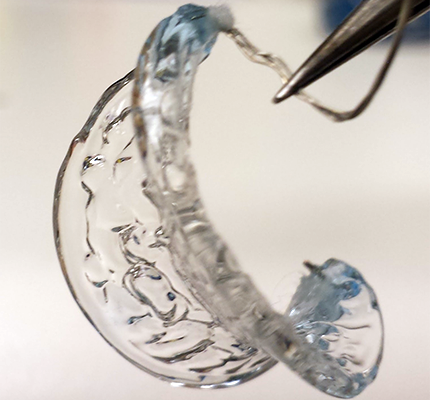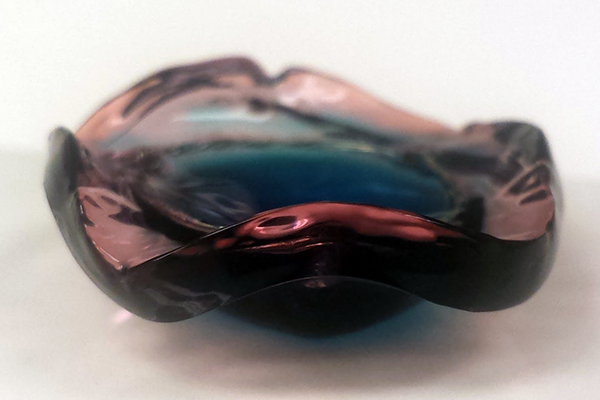Growing up
Researchers create a new technique to form gels that mimics the way living tissues grow.
While we know what a tree leaf, a flower petal, and a human heart look like, we do not always understand the deeper question of how they grow the way they do—a process known as morphogenesis. Researchers at Carnegie Mellon University and Nanyang Technological University, Singapore (NTU Singapore) have developed a novel technique for producing synthetic gels that may give us a clue.
In nature, organ tissue morphogenesis occurs through the growth of various parts at different rates, often controlled by the concentration of growth factors. A research team at Carnegie Mellon, including K. Jimmy Hsia, Changjin Huang, David Quinn, and Subra Suresh (former president of Carnegie Mellon and president-designate of NTU), utilize oxygen-inhibited polymerization to grow complex 3-D structures of polyacrylamide (PA) gels, mimicking natural processes. They have found a way to control the concentration of oxygen in the growing environment and, with mechanical constraints, enable the gels to self-assemble into complex shapes in a process that may help explain how our own organs and tissues take shape.
The technique provides a potentially powerful tool for researchers to study growth phenomena in living systems.
K. Jimmy Hsia, Vice Provost for International Programs and Strategy & Professor, Biomedical and Mechanical Engineering, Carnegie Mellon University
The team’s findings were recently published in the Proceedings of the National Academy of Sciences.
The new technique differs from previous engineering methods, which create 3-D structures by adding or subtracting layers of materials. This technique relies on continuous polymerization of monomers inside the porous hydrogel, similar to the process of enlargement and proliferation of living cells in organic tissues.
“The technique provides a potentially powerful tool for researchers to study growth phenomena in living systems,” said Hsia, a professor of Mechanical Engineering and Biomedical Engineering, and also Vice Provost for International Programs and Strategy at Carnegie Mellon.
Hsia’s team is the first to use this process to control the gel’s growth and create complex shapes through molecular self-assembly in PA gels.
“With the capability to control the growth and self-assembly of hydrogels into complex structures,” said Suresh, “researchers may one day be able to generate synthetic organs and tissues to replace diseased and damaged biological tissues.”
Researchers can use this process to form different hydrogel 3-D shapes and architectures for tissue engineering, soft robotics, and flexible electronics.
The project was funded by a grant from the National Institute of Health and Carnegie Mellon University. Carnegie Mellon and NTU have filed a patent on this method.



